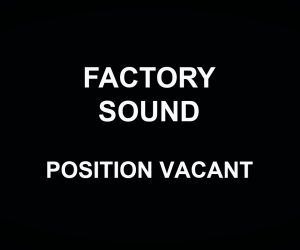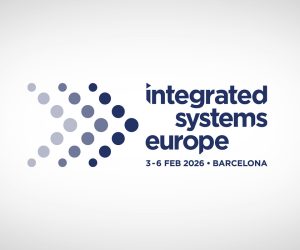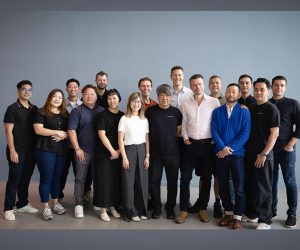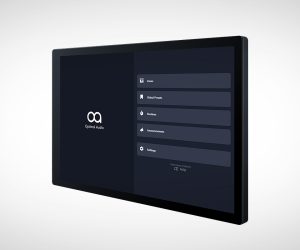
In For The Long Run
Designing AV systems that will keep on keeping on.
Text:/ Bruce Brown
Back in AV issue 20 there was an article about the ‘Blood on the Southern Cross’ show at Sovereign Hill, Ballarat. If you missed it, the essence of the article was that the hardware, although still working after a fashion, was past due for renewal but had survived due to regular maintenance. This is a perfect example of why planning for the long term is an essential skill for the multimedia systems designer (it is also a testament to the hard work and dedication of the technical team at Sovereign Hill). I’m sure it wasn’t part of Brian Shirley’s original hardware design that the equipment should last 19+ years!
Permanent installation for museums, visitor centres, and public exhibitions requires a special set of design parameters and a different mindset. These venues are generally government funded and thus have very limited financial and human resources. They have high visitation (necessitating minimum down-time), are often in remote locations, sometimes in un-air-conditioned buildings in harsh environments and are seldom renewed in less than 10 years, and more often in 20+ years.
THE STARTING POINT
There are three major considerations that drive multimedia system design for permanent installation in exhibitions (in no particular order:
Creative Content: the creative concepts for the exhibition design, and the content, will drive the way the content is delivered. If the creative calls for a full dynamic range 7.1 surround sound system there is no point installing ceiling speakers.
Exhibition Design: similarly, if a large, 6:1 ratio, 4m high, curved screen is called for by the exhibition designers, then the screen, projectors and geometry of the installed system will need to meet that design specification.
System Maintenance: The resources available to the client/owner for long term maintenance of the system, human, mechanical and financial, need to be considered. If you go ahead and install a bank of projectors in the ceiling 6m above the floor to project on to the curved screen, they are not going to be accessible from a ladder. The technician will need an elevated work platform to access them safely, it will take several hours to change the lamps a couple of times a year, and the lamps are going to cost over $1,000 each.
REPUTATIONS ON THE LINE
As creative producers and system design consultants, we at Mental Media also have the ultimate motivation. If the hardware installation falls over through lack of maintenance or inadequately specified equipment, then our productions are no longer shown in their best light – or at all! So it is our aim to design installations that are easily and affordably maintained by local resources.
It doesn’t matter whether it’s a major institution in a capital city or a small regional museum in a remote location, design needs to adapt to the local conditions and resources. Strategies can be developed to cater for a range of circumstances – form follows function. If the designer is aware of the circumstances prevailing at a given location, then strategies can be developed to ensure the best technical solution is provided. The multimedia system designer’s role is to weave a path between the creative concepts, the exhibition design, the environmental circumstances and the budget.
After developing the design so that it meets both the exhibition design and creative content requirements (often harder than it sounds) it remains to design the system for the end user – owner/operator, in-house techs and/or maintenance contractor – with the environmental conditions as major consideration.
(above) The Eureka Hotel is burning down again, just as it has done between one and three times each night, 350 nights per year, for more than 19 years. Image courtesy Sovereign Hill.

DESIGN FOR THE ENVIRONMENT
Installing a Blu-ray player in an un-air-conditioned visitor centre in the Flinders Ranges isn’t going to work – well not for long anyway. The extreme heat and dust in the environment will soon render it useless; the installer will be constantly be called on to effect repairs; the client will be dissatisfied and the producer of the content disappointed. A solid-state media player is more likely to do the job for much longer, but check the specification and take note of the maximum operating temperature to make sure it can cope in the working environment! The same applies to the display: if your installed system is not rated to operate above a certain temperature, make sure the client is aware of this at the design stage. It may be that they need to reconsider and provide some form of cooling or just turn the system off on the very hot days, but they need to make that decision.
REDUCE THE MAINTENANCE
There are some maintenance tasks that can’t be avoided – yet. Projectors are now the highest maintenance item in the AV designer’s toolkit of technologies. There’s no avoiding it; they contain very bright lamps and suck enormous amounts of air. The lamps have a finite life, and dust inevitably accumulates in the cooling paths. Design so the projectors are easily accessible. Make everyone aware of the lamp life cycle and the associated cost of replacement lamps. Enquire who will change the lamps and make sure they understand how and when. Schedule regular bench-top maintenance and specify projectors that are warranted for 24/7 operations with clearly-defined maintenance cycles.
Multimedia systems design also includes the integration of elements other than just audio and visual devices. Lighting, mechanical and special effects are often included in installations. As multimedia designers and consultants on the recent Newcastle Regional Museum project (see AV Issue 24) we specified that the lighting and mechanical systems be designed to reduce maintenance. As many of the lighting instruments as possible have LED lamps, including Mac350 moving head fixtures. The smoke machines are modified with long feeder-tubes, extra-large fluid reservoirs to provide both ease of access and a reduced refill frequency, and a special mix of readily available fluids to reduce consumption. The operations manuals also include special instructions on long-term maintenance procedures, such as regularly flushing the smoke systems with deionised water.
KISS
In regional and remote locations the aim is to make the systems as simple as possible. Small, robust controls systems with solid-state memories that can be reset with a power cycle; fanless computers with solid state drives and their BIOS set to restart after power off; solid state media players; lighting instruments using locally-available low voltage lamps, etc. All of these measures help to provide ownership to the owner/operator and make the job easier for the local electrician or Dick Smith employee to maintain the system.
Regardless of the location, the budget or the resources, a system designer worth their salt should be able to design a system that can be installed and remain in good working order for at least 10 years. It requires creative thinking, product knowledge and selection of the appropriate hardware for the job. It also requires the system designer to provide the best advice to the stakeholders. There is little to be gained from installing a cheap projector if it is not rated for 24/7 operations, as it will soon fail and require replacing, and it is better to spend four times as much on LED lamps that will last 10 times as long.
In the end the budget will be the overriding factor. It’s always more expensive at the outset to specify and install high-quality robust equipment and quality consumables, even though In the longer term it will save the extra expense many times over. Unfortunately the rub is that the initial expenditure comes from a set (or even shrinking) project budget, whereas the maintenance, consumables, spares, etc. are funded from recurring expenditure.
But that’s a topic for another time.















RESPONSES